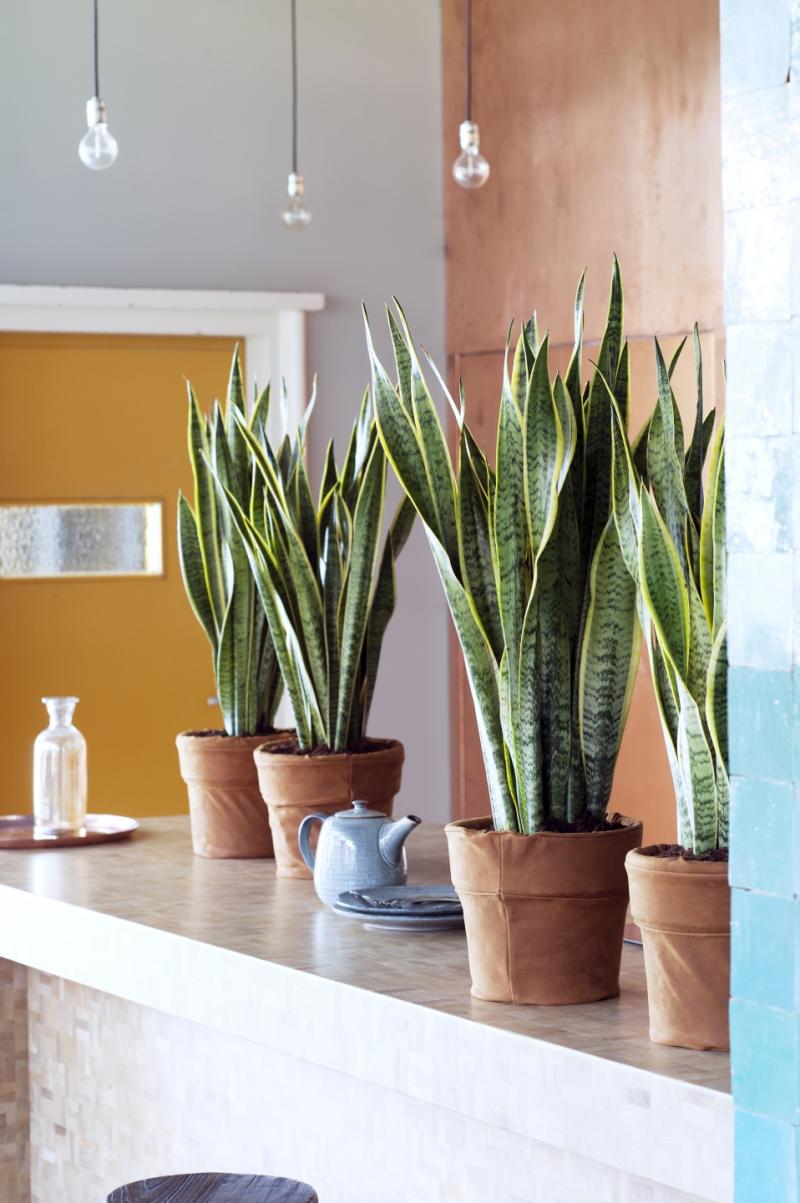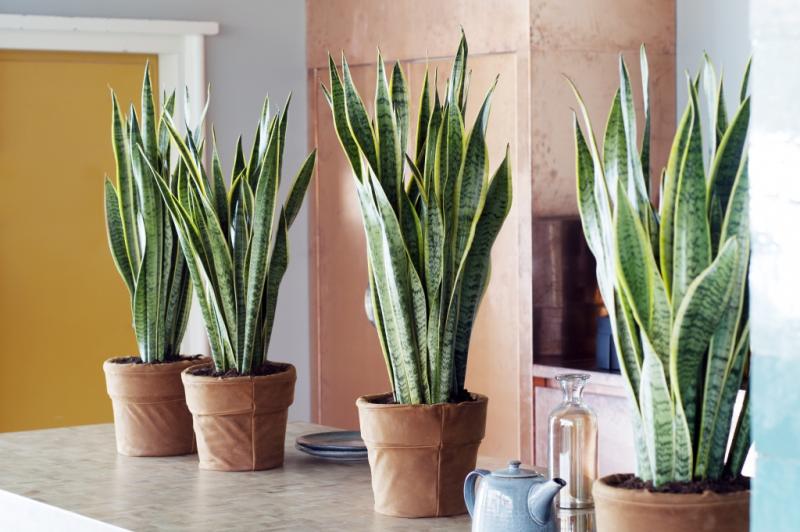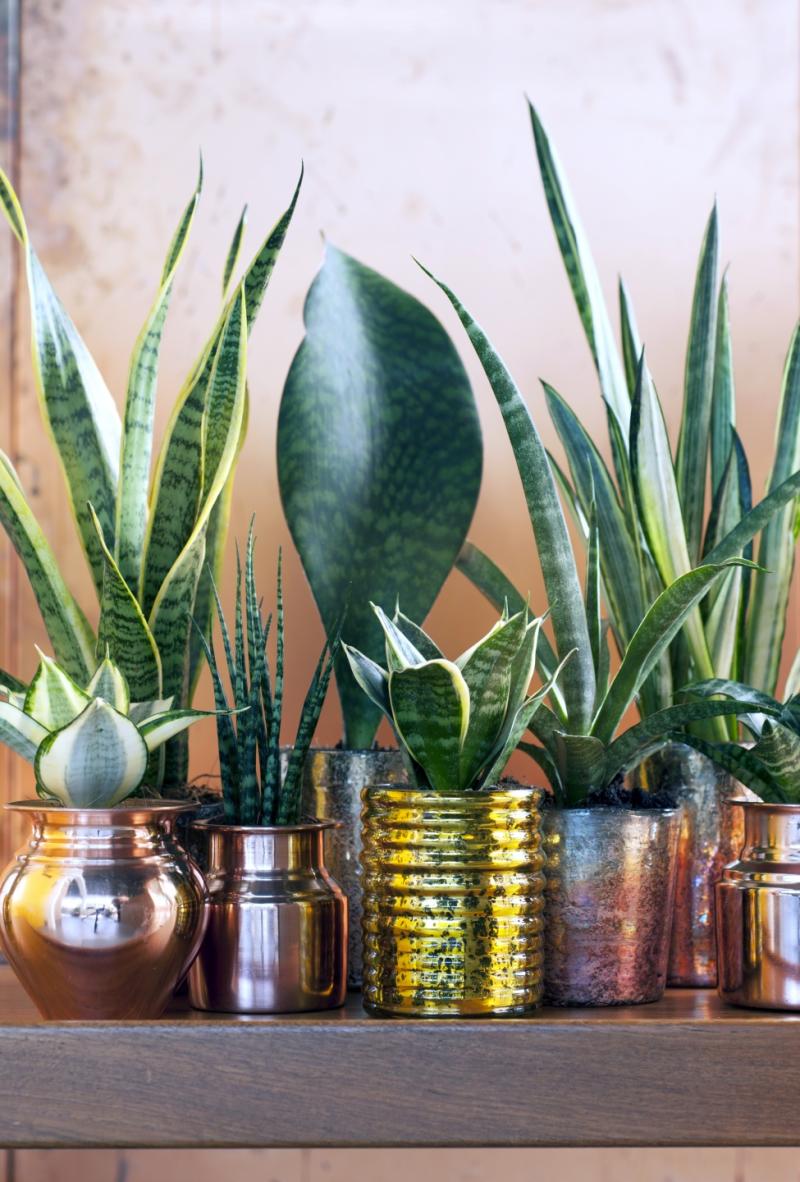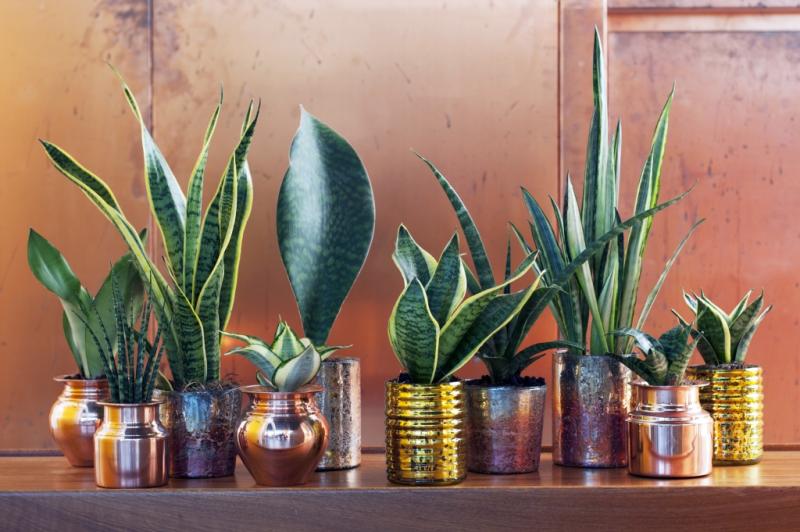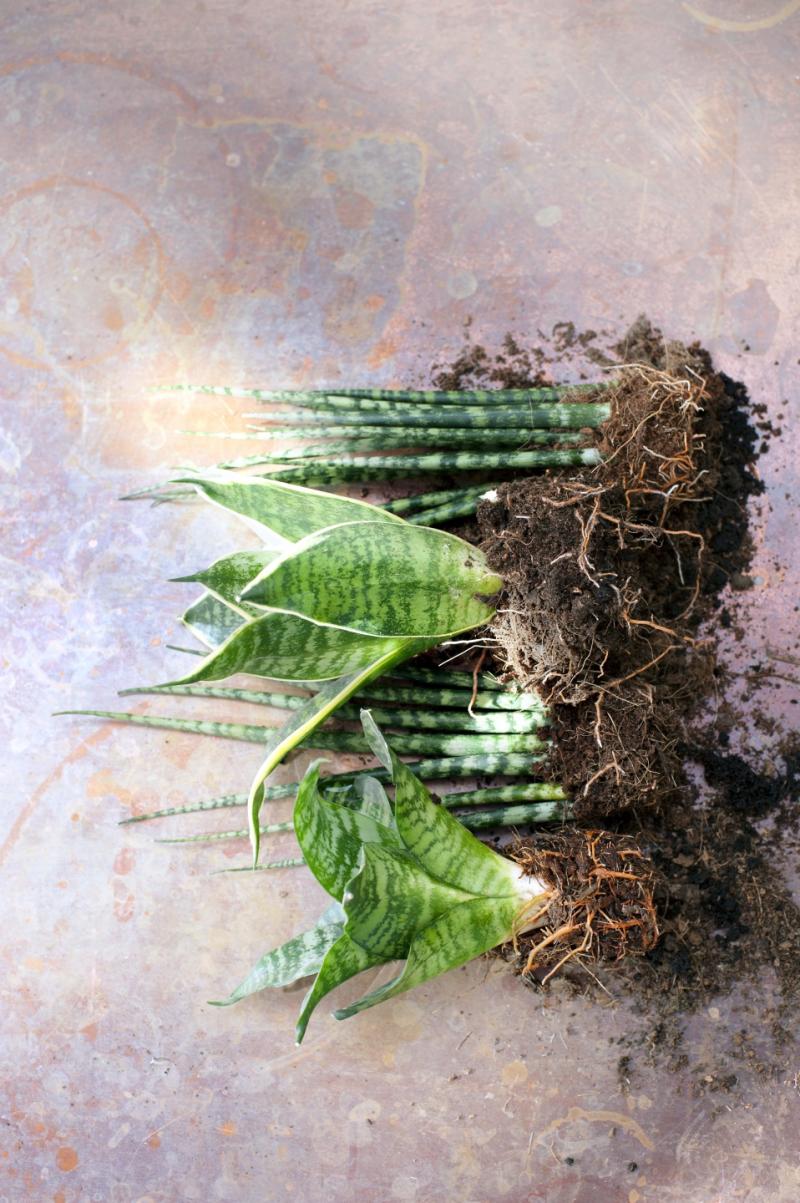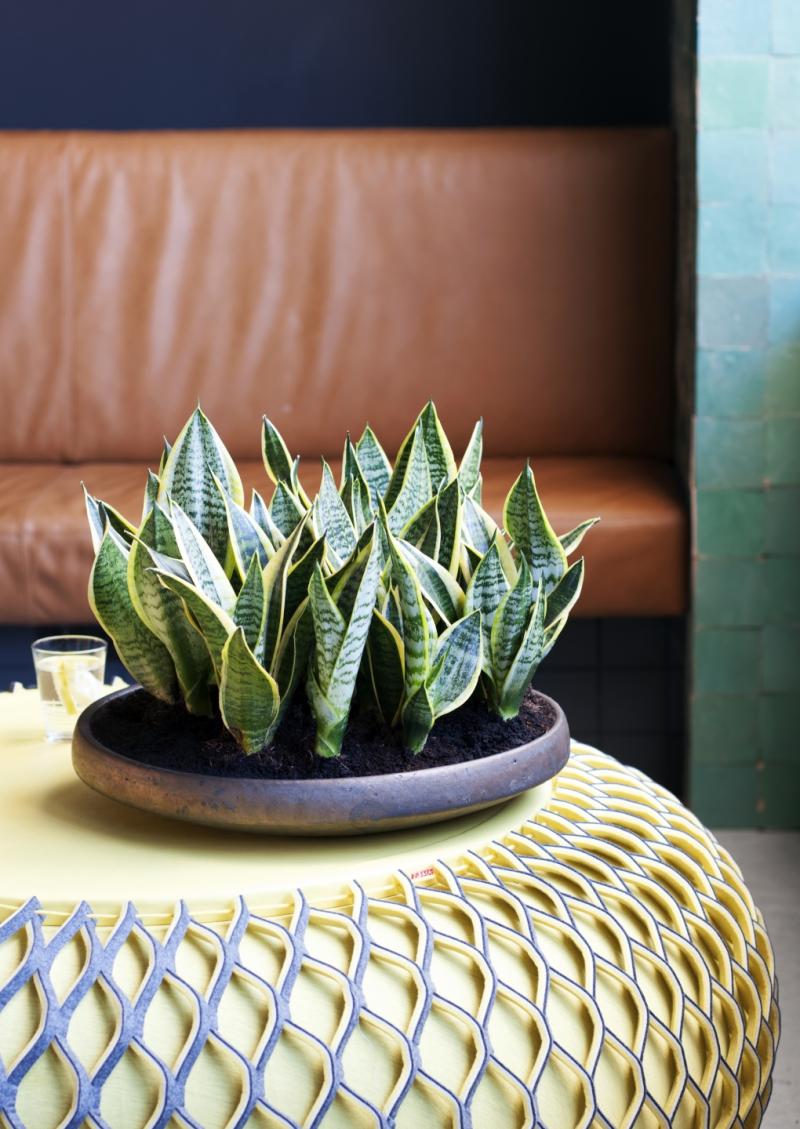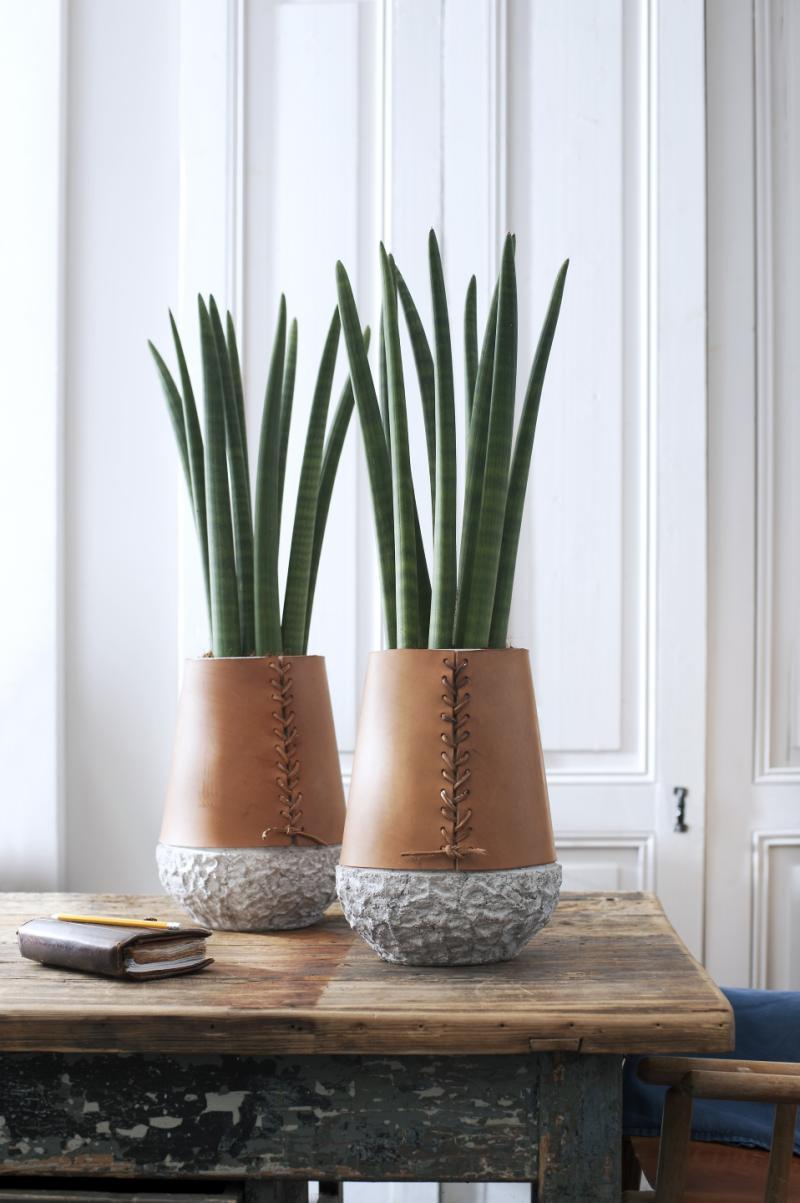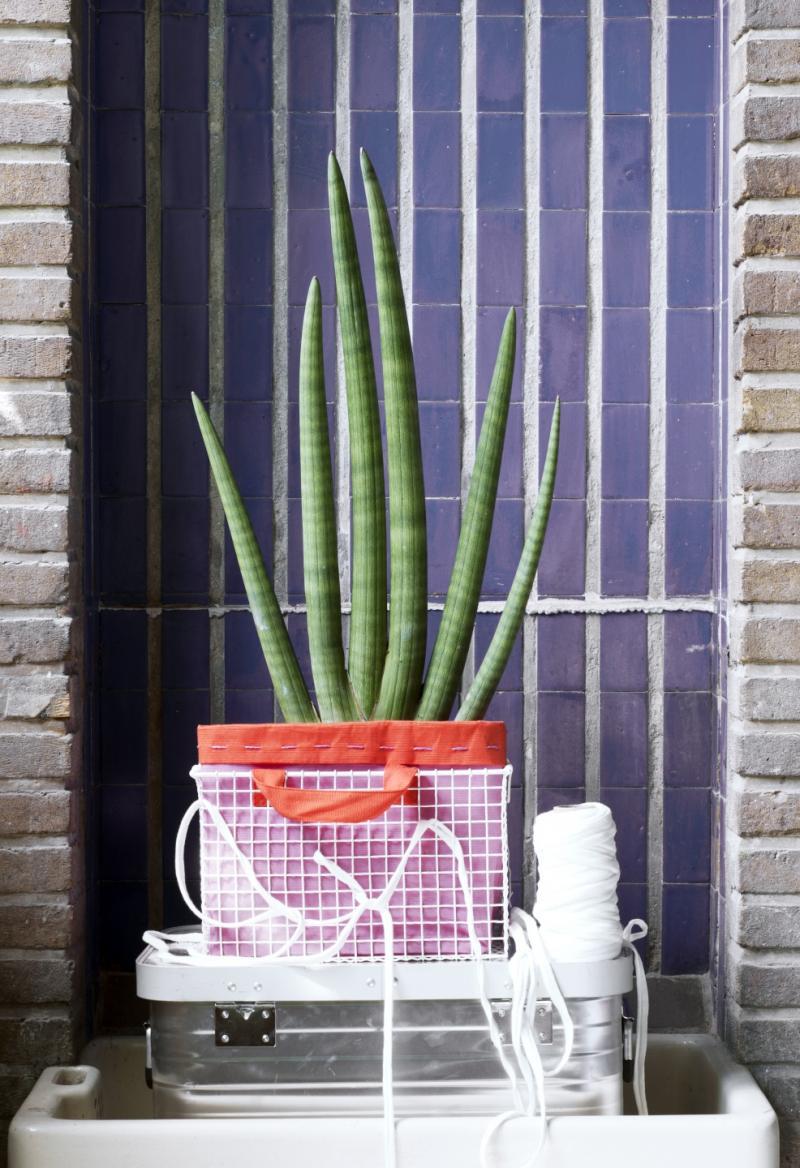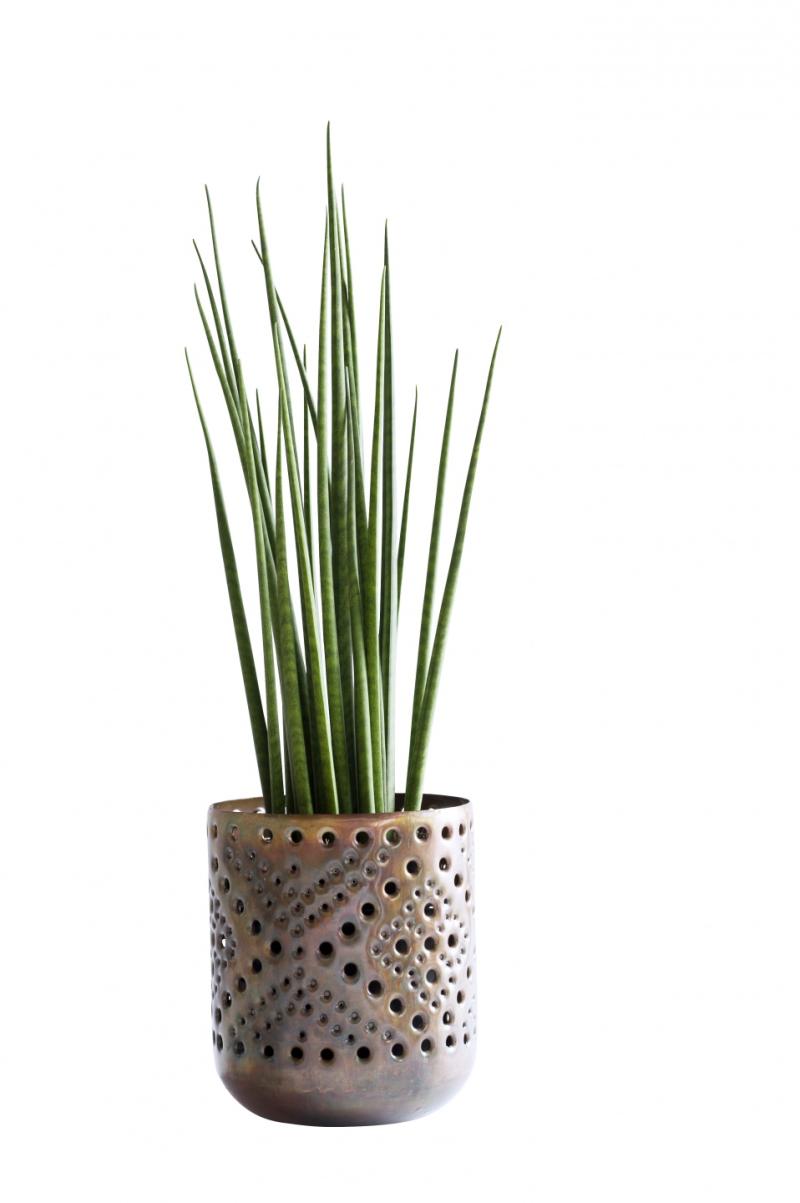August 2015: Mother-in-law’s tongue is Houseplant of the month
The Houseplant for this summer month is the Mother-in-law’s tongue, also known as the Sansevieria. Each month a different plant is given the centre of attention as Houseplant of the month. Why don’t you join in? You can download some POS material for your shop, underneath
The story of the Mother-in-law’s tongue
Mother-in-law’s tongue is one of the easiest houseplants. The plants have rootstocks, out of which thick, tall, sword-like shape leaves with succulent characteristics grow. The name, Mother-in-law’s tongue, refers to the pointed tips of the leaves, which symbolises the sharp tongue of the Mother-in-law!
Mother-in-law’s tongue production
The plant originates from the dry areas of Southern Africa and Asia where it had to survive in the hot desert climate. Sansevieria was named after the 18th Century prince, Raimondo di Sangro from the Italian San Severo. Since approximately 2004, Sansevieria cylindrica has been in production, as well as the traditional Sansevieria trifasciata. This cylindrica now accounts for 38% of Mother-in-law’s tongue production. There is also a braided version and this cylindrica is produced in Thailand.
What do you need to look out for when purchasing Mother-in-law’s tongue?
• Size. Take a good look at the pot size and the thickness and length of the leaves.
• Leaves. Some varieties are determined by the way the leaves are grown or braided.
• Health. Check if the plants are free of scale insects and suberisation (on older plants). Also check the quality of the leaf points and the root system.
• Rot. When the Mother-in-law’s tongue has been too wet for a long period of time, they can begin to rot. So check if they are sturdy in the pot.
Range of Mother-in-law’s tongue
The range of Mother-in-law’s tongue has significantly expanded in recent years, with new varieties and cultivars. The most well-known is the Sansevieria trifasciata ‘Laurentii’, the Mother-in-law’s tongue with green, long leaves and golden yellow edges. Within the variety trifasciata there are more cultivars which differ in leaf colour (green, silver or gold variegated) or in leaf length. The variety cylindrica is known for its round, long leaves. They come in many different sizes; fan shaped or braided, and the colours of the leaves are green or grey. The variety kirkii has a much smaller, thinner green leaf. This also comes in different shapes.
Care tips for consumers
Mother-in-law’s tongue is an easy care plant. The root ball needs to stay a bit damp and in the winter a bit dryer. Staying too damp for a long time isn’t advisable; the plant would rather be too dry. Don’t water the leaf rosette. Because of its succulent leaves, the Mother-in-law’s tongue can cope well with dry air. Give the plant enough light, it can even cope with full sun. A rest period isn’t absolutely necessary. The Mother-in-law’s tongue is air purifying and improves the humidity level. This improves the environment which is good news to share with your customers.
Creative tips for the Mother-in-law’s tongue
Because of its straight tall shape, the Mother-in-law’s tongue is very suitable for plant arrangements with a vertical line. Especially in combination with lovely tall pots, this will create a trendy result, especially in modern interiors. Another nice idea: place a whole family of Mother-in-law’s tongues together, which will work well with so many varieties.
You can download the images and poster (link) below for free:
08_2015_poster_mother-in-laws_tongue.pdf


